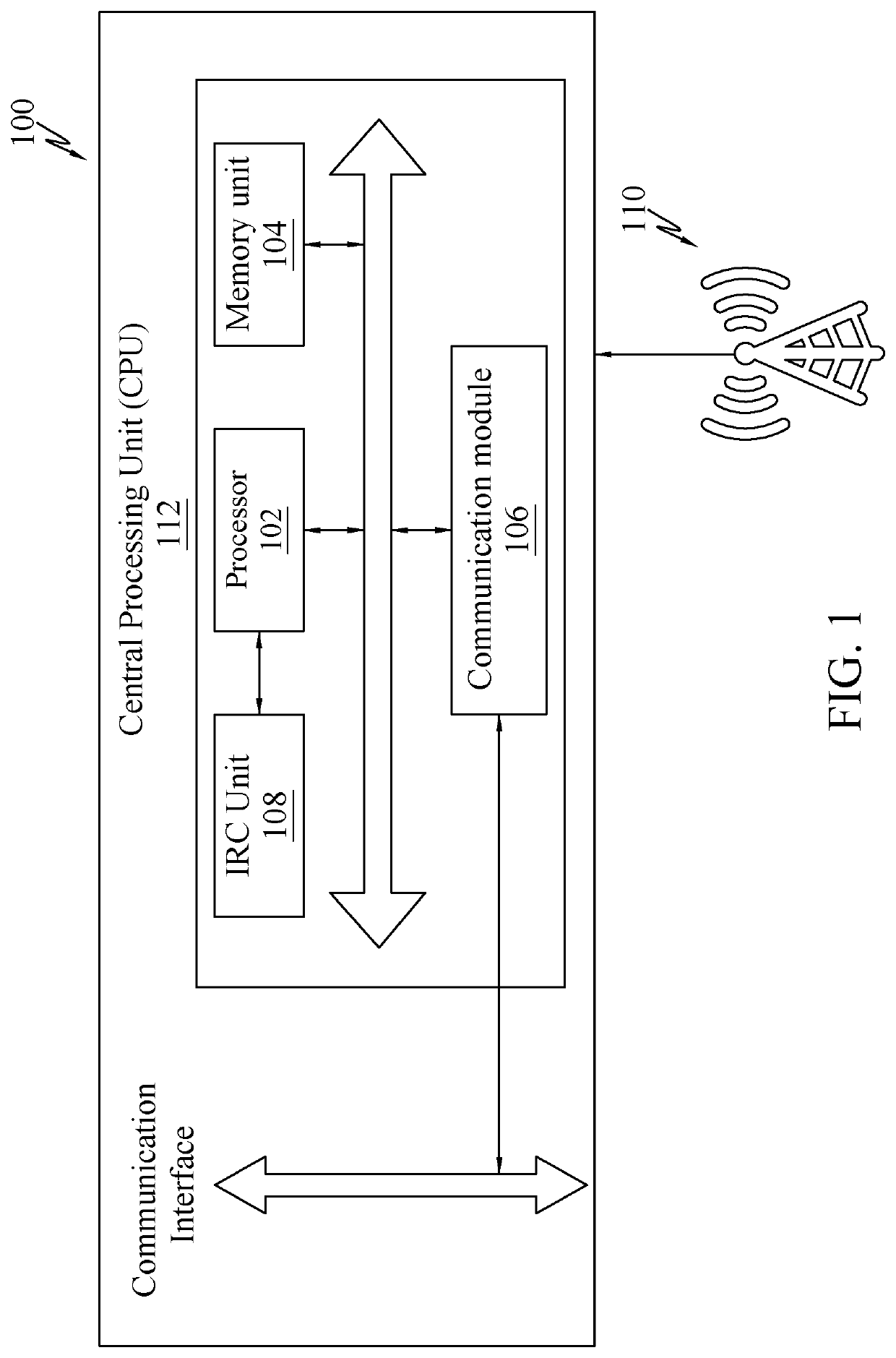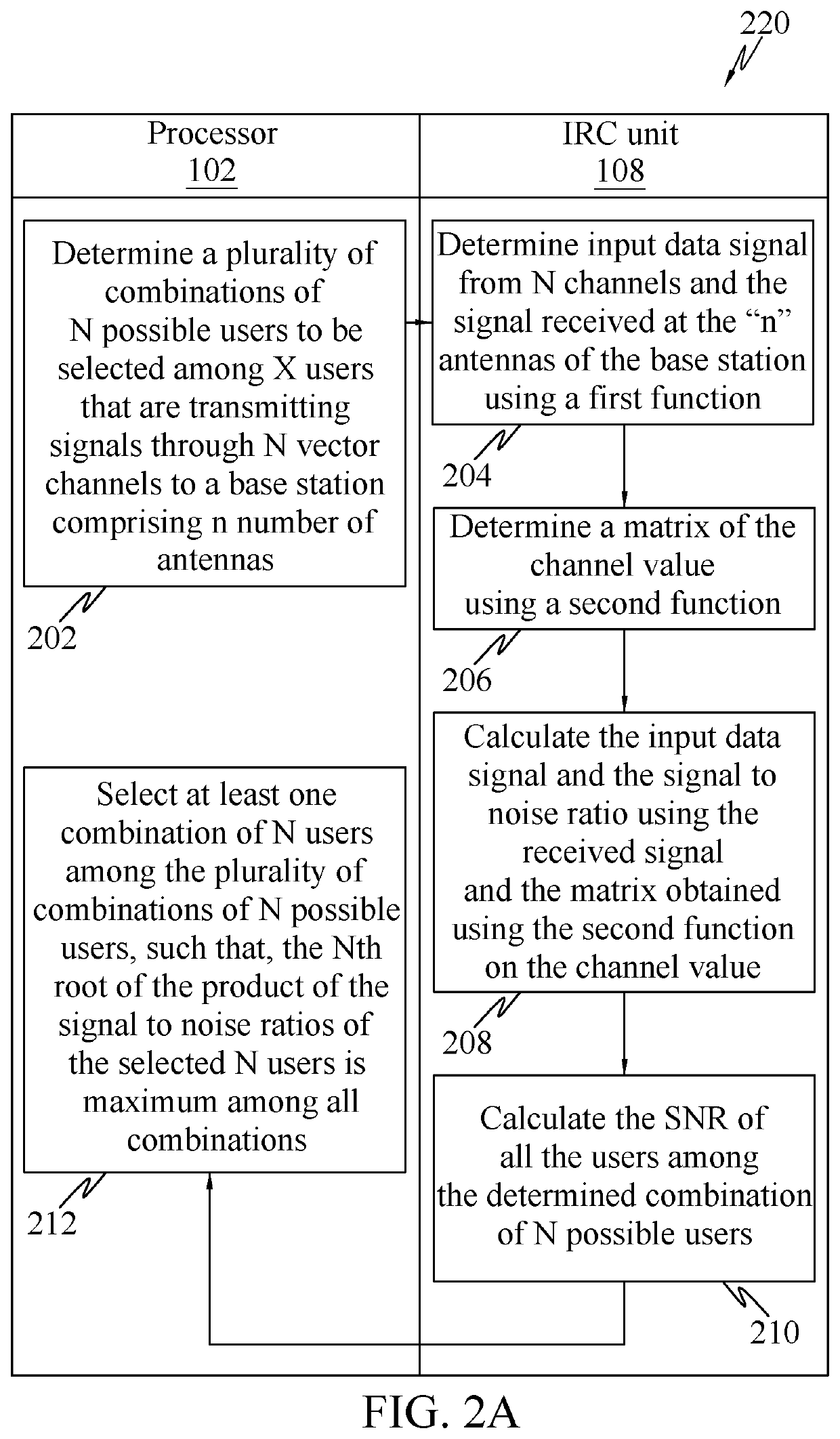Method for improving signal to noise ratio in an uplink transmission
a signal to noise ratio and transmission method technology, applied in the field of network systems, can solve the problems of higher interference or noise level in any network system, poor signal quality, error, etc., and achieve the effect of improving signal to noise ratio and computing signal to noise ratio (snr)
- Summary
- Abstract
- Description
- Claims
- Application Information
AI Technical Summary
Benefits of technology
Problems solved by technology
Method used
Image
Examples
Embodiment Construction
[0034]I. OVERVIEW[0035]II. EXEMPLARY SYSTEM[0036]III. FIRST EXEMPLARY METHOD FOR IMPROVING SNR-1 CELL, 1 BS, MANY USERS ON SAME SUB-CARRIER, 1 ANTENNA / USER[0037]IV. SECOND EXEMPLARY METHOD FOR IMPROVING SNR-N CELL, N BS, 1 USER / BS ON A GIVEN SUB-CARRIER, 1 ANTENNA / USER[0038]V. THIRD EXEMPLARY METHOD FOR IMPROVING SNR-N CELL, N BS, 1 USER / BS ON A GIVEN SUB-CARRIER, 2 ANTENNA / USER[0039]VI. ACCOMMODATING MORE USERS IN A CELL ON THE SAME SUB-CARRIER[0040]VII. SELECTING BEST USERS FOR ACCOMMODATING IN A CELL ON THE SAME SUB-CARRIER[0041]VIII. COMPUTING SIGNAL TO NOISE RATIOS[0042]IX. ANTENNA SELECTION FOR IMPROVING SNR[0043]X. CHANNEL ESTIMATION[0044]XI. CONCLUSION
[0045]The following detailed description includes references to the accompanying drawings, which form part of the detailed description. The drawings show illustrations in accordance with example embodiments. These example embodiments are described in enough detail to enable those skilled in the art to practice the present subje...
PUM
 Login to View More
Login to View More Abstract
Description
Claims
Application Information
 Login to View More
Login to View More - R&D
- Intellectual Property
- Life Sciences
- Materials
- Tech Scout
- Unparalleled Data Quality
- Higher Quality Content
- 60% Fewer Hallucinations
Browse by: Latest US Patents, China's latest patents, Technical Efficacy Thesaurus, Application Domain, Technology Topic, Popular Technical Reports.
© 2025 PatSnap. All rights reserved.Legal|Privacy policy|Modern Slavery Act Transparency Statement|Sitemap|About US| Contact US: help@patsnap.com



